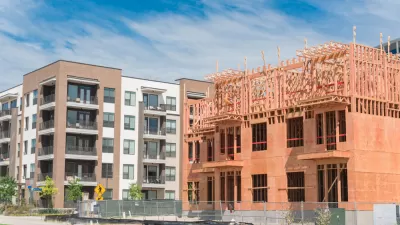When a region isn't building enough housing to meet the demands of a growing population and shifting demographics, zoning codes reform and infrastructure investment can be the solution.
"Regional Plan Association, HR&A Advisors Inc., and the Rauch Foundation released new research this week highlighting the high demand for multifamily housing on Long Island," according to a post on the Regional Plan Association website.
"The report, funded by the Rauch Foundation as part of the Long Island Index, uses RPA’s regional population projections to estimate future housing demand on Long Island, and suggests possible strategies for creating an adequate supply of new housing"
The report concludes that cities and counties on Long Island have been building fewer multi-family residential units than required by a growing population. Even taking into account a recent increase in the number of multi-family units constructed, the pace of construction will only meet 40 percent of the anticipated need by 2030. The report also found that much of the recent building that has been completed doesn't meet the changing preference of Americans toward housing in preferable, mixed-use communities. "RPA estimates that the population of 25 to 44 year olds in Long Island could increase by 17% in the next 15 years, an age group that prefers areas with amenities, walkability and character," according to the post.
The report includes recommendations for zoning and planning policy that could enable more of the kinds of housing it predict the region will need in the future.
FULL STORY: New Report Quantifies Long Island’s Housing Needs, Offers Solutions

Planetizen Federal Action Tracker
A weekly monitor of how Trump’s orders and actions are impacting planners and planning in America.

Map: Where Senate Republicans Want to Sell Your Public Lands
For public land advocates, the Senate Republicans’ proposal to sell millions of acres of public land in the West is “the biggest fight of their careers.”

Restaurant Patios Were a Pandemic Win — Why Were They so Hard to Keep?
Social distancing requirements and changes in travel patterns prompted cities to pilot new uses for street and sidewalk space. Then it got complicated.

Platform Pilsner: Vancouver Transit Agency Releases... a Beer?
TransLink will receive a portion of every sale of the four-pack.

Toronto Weighs Cheaper Transit, Parking Hikes for Major Events
Special event rates would take effect during large festivals, sports games and concerts to ‘discourage driving, manage congestion and free up space for transit.”

Berlin to Consider Car-Free Zone Larger Than Manhattan
The area bound by the 22-mile Ringbahn would still allow 12 uses of a private automobile per year per person, and several other exemptions.
Urban Design for Planners 1: Software Tools
This six-course series explores essential urban design concepts using open source software and equips planners with the tools they need to participate fully in the urban design process.
Planning for Universal Design
Learn the tools for implementing Universal Design in planning regulations.
Heyer Gruel & Associates PA
JM Goldson LLC
Custer County Colorado
City of Camden Redevelopment Agency
City of Astoria
Transportation Research & Education Center (TREC) at Portland State University
Camden Redevelopment Agency
City of Claremont
Municipality of Princeton (NJ)





























